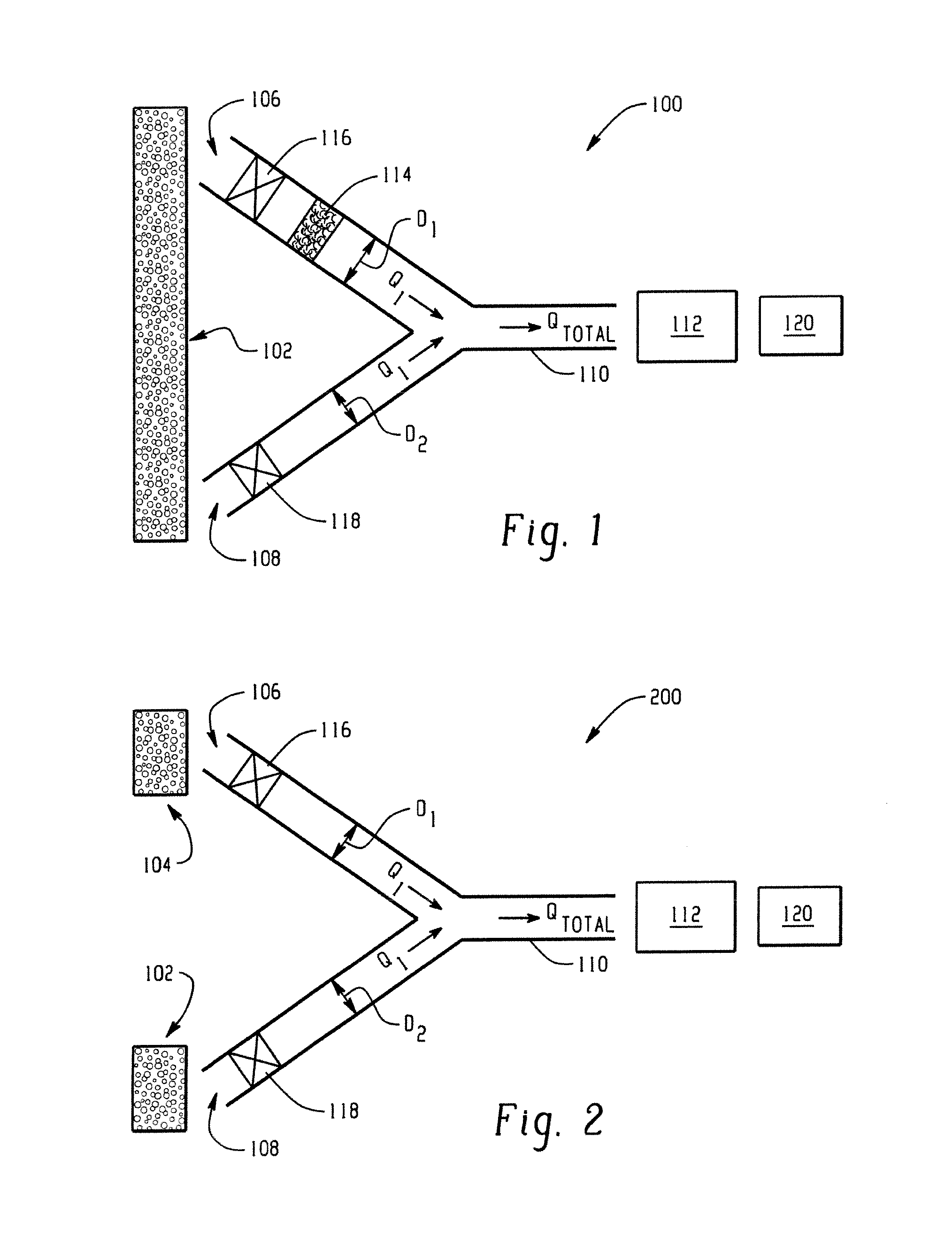Ozone reducing y-pipe for low cost ozone sensor
a low-cost, ozone-reducing technology, applied in the field of gas detection, can solve the problems of ozone being a very reactive and unstable gas with a short half-life before it reverts back to oxygen, affecting respiratory health, and affecting forests, etc., to achieve the effect of eliminating ozone and reducing costs
- Summary
- Abstract
- Description
- Claims
- Application Information
AI Technical Summary
Benefits of technology
Problems solved by technology
Method used
Image
Examples
Embodiment Construction
The current inventive ozone detection system has the ability to measure ozone in small and large concentrations using a relatively low cost ozone sensor that generally is capable of ozone detection only at much lower levels. This is achieved in the inventive system, by diluting the original sample, calculating the ozone level in the diluted sample, and using this data to calculate actual ozone levels in the original sample gas. This eliminates the need to use more sensitive, costly sensors and yet still allows the appliance to be suitable for use in higher ozone environments. For example, the current ozone sensing system may be incorporated into a deodorizing- or sanitizing-type consumer product such as those products set forth in U.S. Ser. No. 12 / 621,947 to our common assignee, among others. In accordance with one embodiment of the present disclosure, a sensor operative to detect ozone concentrations in the range of 0.5-10 ppm is used to sense the ozone concentration of gases havin...
PUM
| Property | Measurement | Unit |
|---|---|---|
| concentration | aaaaa | aaaaa |
| diameter D1 | aaaaa | aaaaa |
| diameter D2 | aaaaa | aaaaa |
Abstract
Description
Claims
Application Information
 Login to View More
Login to View More - R&D
- Intellectual Property
- Life Sciences
- Materials
- Tech Scout
- Unparalleled Data Quality
- Higher Quality Content
- 60% Fewer Hallucinations
Browse by: Latest US Patents, China's latest patents, Technical Efficacy Thesaurus, Application Domain, Technology Topic, Popular Technical Reports.
© 2025 PatSnap. All rights reserved.Legal|Privacy policy|Modern Slavery Act Transparency Statement|Sitemap|About US| Contact US: help@patsnap.com

